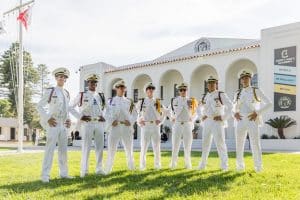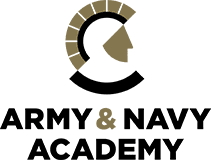
The future of our nation and that of other developed countries is literally up in the air, due in large part to a growing worldwide shortage of commercial and military pilots. If not cured relatively soon by military boarding schools and other private schools, the pilot shortage will could seriously curtail public access to air travel and even weaken the nation’s military air power component.
According to the Federal Aviation Agency (FAA), the number of pilot certificates issued by that agency has decreased significantly in recent decades. The future doesn’t look much better. A number of reports indicate issues abound in the commercial pilot arena, as well as in military aviation.
Not only does fewer Air Force pilots and Naval aviators affect military readiness, it also constricts even further the supply of commercial pilots. It wasn’t that long ago that the pilots came from military backgrounds, so this steady stream of experience has rapidly diminished. Meanwhile, the International Air Transport Association predicts demand for air travel is rapidly increasing.
How do we begin to cure the deficit?
Satisfying the need for more pilots begins in our nation’s schools – attracting and educating tomorrow’s adults for careers in aviation, principally as pilots. The Aircraft and Pilots Association (AOPA) is continuing to work on curriculum tited with STEM subjects. In addition, there are a number of private schools and military boarding schools offering top notch programs.
How to find a high school aviation programs?
Here are a few schools to check out below. Also, you can find aviation programs through internet searches, association websites, and specific school directory listings.
1. Army and Navy Academy, Carlsbad, CA. – All Boys, Grades 7-12, Boarding & Day
Army and Navy Academy, a college preparatory boarding school in Carlsbad, CA, offers a four-year elective program CThe Academy’s University of California-approved course connects aviation and aeronautics to STEM courses and other core curriculum to prepare cadets for future careers as certified pilots of commercial and military aircraft as well as drones. In addition to preparing cadets to take the Private Pilot written and flight proficiency exams upon completion of the course, they also will receive college credits to help them pursue aviation or aeronautics at a four-year college or university.
2. Randolph-Macon Academy, Front Royal, VA. – Coed, Grades 6-12, Boarding & Day
“The Program provides both Flight and Drone instruction, preparing students for college careers in subjects that have yet to exist or be defined in our world today.
The philosophy of the Flight Program is to attract young people to the world of aviation and flight. The aviation and aerospace industries are growing rapidly and currently have a shortage of qualified pilots and professionals. A number of our students have chosen to attend our institution because of the Aviation Program, and Randolph-Macon Academy is proud to offer them the chance to explore the world of aviation.”
3. St. Andrew’s School, Boca Raton, Florida – Coed, Grades PK-12, Boarding & Day
“Aviation Program: Saint Andrew’s School partners with Lynn University – College of Aeronautics to offer Upper School students ages 16 and over three pilot licensing training opportunities after school and on weekends.
1) Private Pilot: This FAA-issued license is your first step in your pursuit of a hobby or future career in the clouds.
4. Additional Private Schools with Aviation Programs – Additional private schools you might be interested include: Admiral Farragut Academy in Florida, Hargrave Military Academy in VA, Wy’East Mountain Academy in Wyoming, Blue Ridge School in Virginia.
How aviation interacts with the STEM curriculum
Preparing young people for careers in aviation goes far beyond training exercises in a simulator or later, flying solo in a cockpit. A robust aviation- or aeronautics-based education includes a hands-on approach to learning and mastering STEM topics as well. In an article, “Understanding STEM Education through Aviation,” Redbird Flight Simulators, a Texas-based flight training company, gives the following examples of how aviation uses science, technology, engineering and mathematics principles.
- SCIENCE: Weather is an important scientific topic academically as well as for aspiring pilots who need to learn and apply the science behind it. Aviation courses teach the importance of paying attention to what weather looks like now, what is or will be changing and how that may affect flight factors.
- TECHNOLOGY: The advanced technology in today’s aircraft is outstanding; however, with the abundance of technology at a pilot’s fingertips, there is the need to ensure that the pilot understands how to use and operate it correctly.
- ENGINEERING (and Physics): Since there are so many different types of aircraft in today’s skies as well as continuing changes in aircraft design, pilots need to learn the stability and performance characteristics of those aircraft.
- MATH: Being able to calculate the accurate weight and balance and finding the center of gravity of an airplane is very important for ensuring that the aircraft is within acceptable limits. Weight and balance calculations become even more challenging, knowing that as an airplane burns fuel in flight, those calculations change.
Top-rated colleges and universities for aviation courses
Many comprehensive colleges and universities offer some level of courses or degrees in aviation, aeronautics or, in some cases, aerospace engineering. Here are some top colleges for aviation degrees:
- Purdue University
- University of North Dakota
- Ohio State University
- San Jose State University
- Embry-Riddle Aeronautical University
- Academy College
- Hallmark University
- Spartan College of Aeronautics and Technology
- Rio Salado College
- Aerosim Flight Academy
High schools teaching aviation courses, as well as colleges and universities, that offer aviation and aeronautics programs in the U.S. have their work cut out for them. Schools need to ensure we help high school students begin training early to ensure that commercial air travel continues to be readily available and our nation’s military air power remains strong.

Candace Heidenrich is the CEO of Aperture Advisory Associates, where she works with private secondary and higher education leaders to strengthen programs and practices. She founded Aperture in 2018 after more than a decade in a senior administrative role at a boarding school in California. Additionally, she held faculty and chair positions at private schools and colleges in Los Angeles and Ojai. Her background also includes director and executive level positions with start-ups and Fortune 500 corporations.
While earning her B.A. in Education and Humanities in the Lawrence Henry Gipson Scholar program, she studied abroad at Oxford before pursuing her master’s at the University of California, Santa Barbara. A frequent speaker at national conferences, she is a recognized thought leader and authority on enrollment management and marketing best practices.